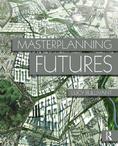ecological networks Environment progetto urbano fragile territories social practices central places participation large scale plans & projects periodic news urban market adi social exclusion/integration historic centers identity populations sociology inu city-regions urban policies public spaces job conservation & preservation resilience landscapes knowledge
Hamburg
Positions, Plans, Projects
I: Building Urban Spaces
Olaf Bartels / Behörde für Stadtentwicklung und Wohnen (eds.)
Hamburg is growing. Germany’s largest port city is preparing to have a population of around two million residents by 2030. For some time now, the city has been pursuing an ambitious construction programme, focusing on internal city development: the new buildings on the northern banks of the Elbe, HafenCity or the “Sprung über die Elbe” (Leap across the Elbe) initiative stand for development strategies on a grand scale.
How should Hamburg continue to develop? What priorities will be set in the future? Hamburg’s urban development planning is placing a new emphasis on the city’s peripheries and the urban spaces along its Magistralen (arterial corridors): post-war modernist housing developments are to be upgraded in order to preserve affordable housing and provide modern workplaces. The goal is an effective mix of uses and a new urban quality of life.
This book portrays Hamburg in the international discourse of city development and presents important projects and protagonists from the fields of architecture, urban planning and landscape design.
The essence of a city such as Hamburg is its building density, the juxtaposition of residential buildings, workspaces in offices, industrial and commercial areas, cultural establishments, gardens, parks and other leisure facilities and the particular density of transport routes. lt is the concentration of many people within a small space that creates variety through diversity and at the same time demands tolerance, but it also promotes encounters and exchange, which in turn strengthen the desire for privacy and separation.
The art of living happily in such a city is finding a balance between these poles. With a population of around 1.9 million people, Hamburg is the second largest city in Germany after Berlin. The Hanseatic city has been growing constantly for years and may have more than two million inhabitants by 2030. Hamburg is without a doubt a large city, but its growth is moderate, not comparable with that of the late 19th and early 20th century or with presentday megacities. A particular feature of Hamburg is that it is growing internally. Old port areas, abandoned industrial sites and railway areas and reclaimed hospital grounds have been and are being developed as new city quarters.
With HafenCity and Elbphilharmonie, Hamburg's internal development has attracted significant attention beyond the city boundaries. These locations not only densify the city fabric, they also complement the city structure. New elements are woven into it and new urban spaces are created. In some places, the aim of this is to break up established monostructures of uses, urban development or architecture to increase the structural and social! diversity in the city or to create it anew.
(Extract from the Introduction, p. 6)
ABOUT THE EDITORS
Olaf Bartels is a German architectural historian and architecture critic. Since 1987 he has worked as an author, editor, curator and moderator, with numerous book and magazine publications as well as research on contemporary and historical architecture and urban development in Germany and Turkey. He taught at universities in Berlin, Braunschweig, Hamburg, Istanbul and Ankara. Bartels is a member of the German Academy for Urban Development and Regional Planning (DASL) and a lecturer at HafenCity University Hamburg.
Related articles:
Online resources and links




Planum
The Journal of Urbanism
ISSN 1723-0993
owned by
Istituto Nazionale di Urbanistica
published by
Planum Association
ISSN 1723-0993 | Registered at Court of Rome 4/12/2001, num. 514/2001
Web site realized by ChannelWeb & Planum Association | Powered by BEdita 3








